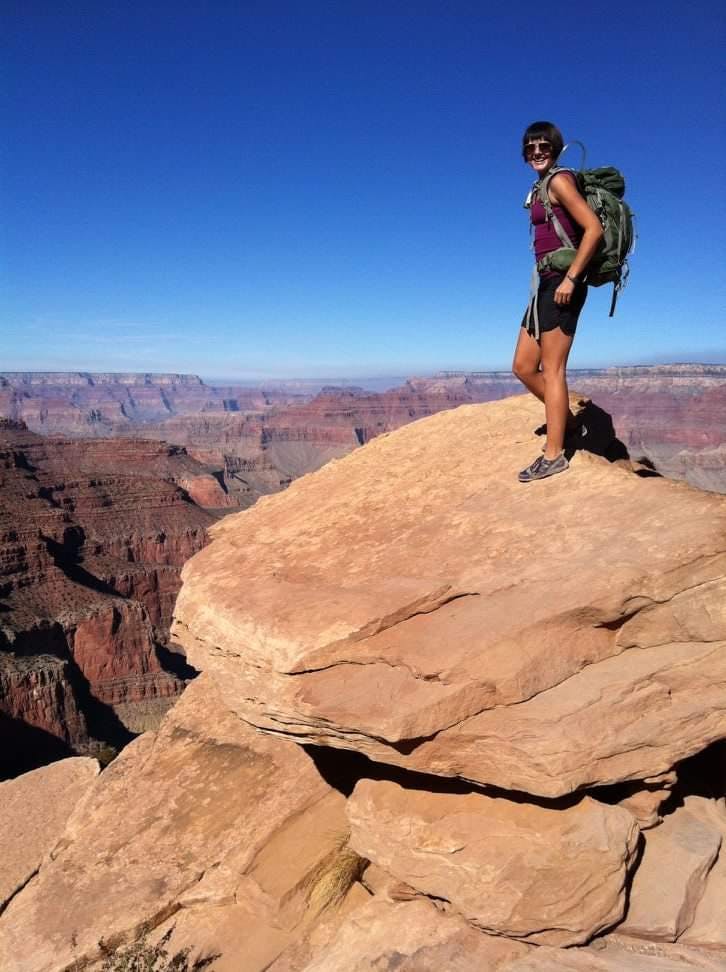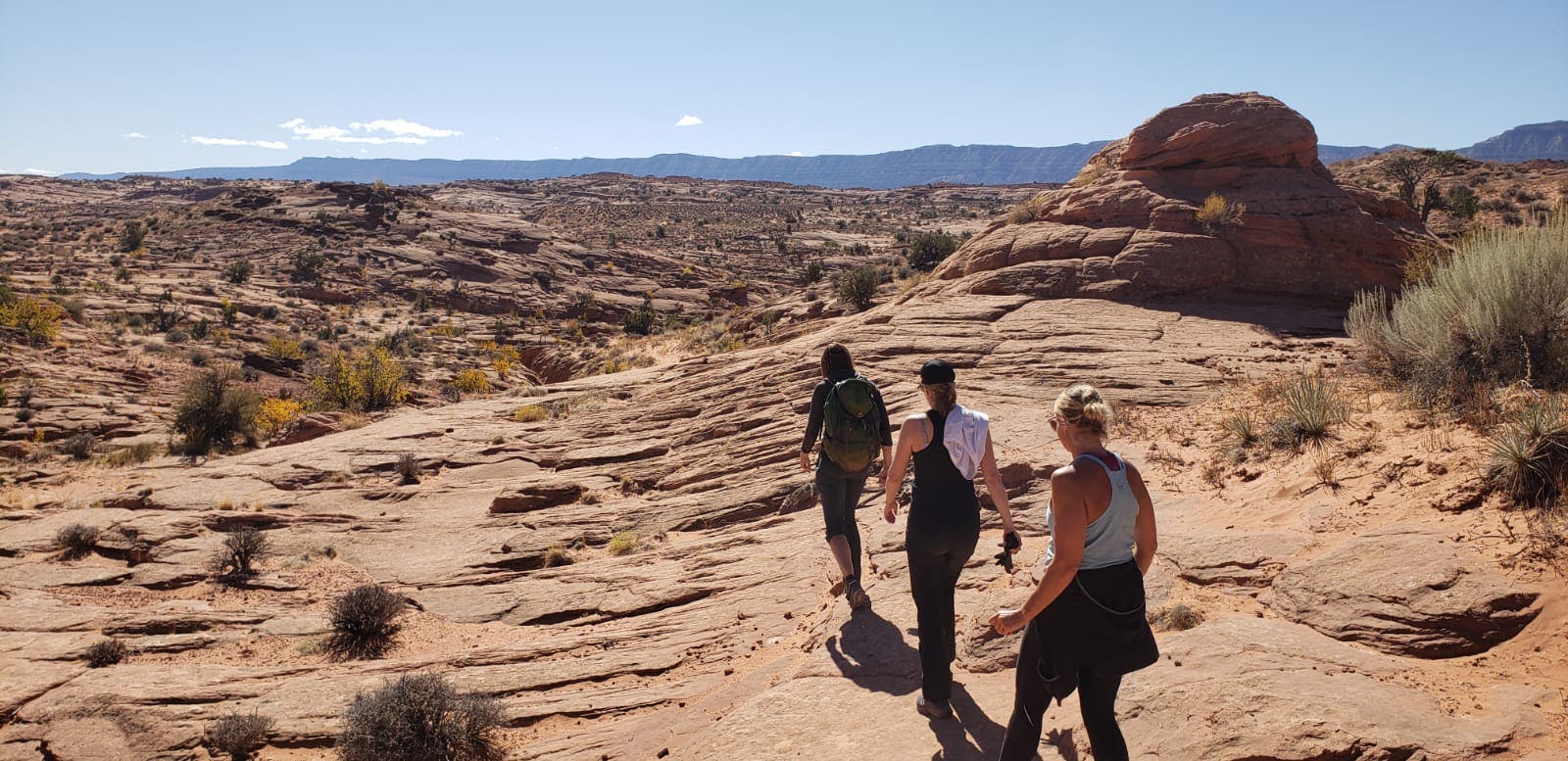If you are like me, you wish for more hours in the day.
More time to do more things, or more minutes to do even nothing at all. The seconds turn on the clock in a relentless fast-forward motion, time for work, rest, cooking, taking kids to soccer practice, appointments, checking emails, chores, and quality moments with family and friends.
Life seems to be on a treadmill that is stuck on the highest speed forward. If buying time was a possibility, all of my coins in that elephant bank on my bookshelf would be spent for extra minutes on the old grandfather clock.
What about time for working out, self care, and health? What about occasions to hike on a trail? Unfortunately, these tend to get placed on the back-burner, right along with cleaning out the attic!
Luckily, there are some tricks and ways to get in moments of exercise during the busy work week.
Being well-conditioned for the trail means several things.
For starters, you won’t have to be so focused on sucking in the wind while trying to enjoy the scenic views. Your body will be able to maintain overall endurance, stability, muscle strength, and stamina, and you will have the confidence to conquer that mountain! Speaking of mountains, got altitude in the forecast for an upcoming hike? Training for higher altitudes is especially important and beneficial due to the lower oxygen levels you can expect to experience.

Conditioning reduces injuries and pain. Think more smiles, fewer blisters, reduced fatigue, and more enjoyment on the trail. Your recovery time post-hike will be quicker. You might have more time on the trek to enjoy the sights, take photos, or explore side trails.
When you are fully conditioned and do have the time to get on the trail, your body can be at peace on your hiking journeys! Blood, sweat, and tears will hopefully be a thing of the past on hikes.
- Place time to workout on your calendar and make it a priority. Hone in on specific goals you would like to set. You can even set a timer or an event reminder. Health is wealth. Aim for at least 30 minutes of moderate physical activity every day, or a minimum of 2.5 hours weekly. It is suggested that you begin training 8 weeks prior to a big hike, but it doesn’t hurt to start even earlier. You can track your progress in a journal, calendar, or log it on a fitness app or smart watch. Discretion: Please seek professional or medical help on a conditioning and training routine that is right for you.
- Find a friend or a family member to join you, or at least to hold you accountable for the conditioning.
- At home, there are many distractions. However, some of these “distractions” can actually be accomplished while working out. Have a good book to read or a favorite TV show to watch? Many exercises can be done while multitasking!
- Set up a space in your house for your conditioning area. Ideally and if possible, make it a quiet space with few to no distractions. This will help you to stay focused on the task.
- Make a list of repetitions to complete, watch a good follow-along workout video (I particularly enjoy those workout videos from the 80s!), or download a good workout app such as Nike Training Club, At Home Workout, or 7 Minute Workout (a good app if that is all the time allowance you can dedicate!). Monitor overall improvements, weight or rep increases, and personal records.
- Mix it up: Change the routine around. Get creative with the workouts, but ease into new exercises and weight increases to prevent injuries. Have fun with it. The last thing you want to do is to make time for a boring and unenjoyable routine.
- Recovery: Rest is equally as important as the training. Consider proper sleep, plenty of fluids, stretching or yoga, massage, good nutrition, and rest days! I enjoy using foam rollers, a tennis ball, a lacrosse ball, a massage gun, an e-stem unit, and doing restorative yoga for body recovery. A theracane, compression garments, and hydrotherapy are also great methods to optimize recuperation.
- Your personal at-home gym doesn’t need to be the Taj Mahal of gym equipment. There is no need to purchase a Peloton Treadmill or a Bowflex machine! You can complete a productive and effective workout with little to no equipment.
If you desire some fundamental at-home conditioning tools, here are some optional basics:
- An exercise mat. I love to have the space set for my conditioning. The minute I place my yoga mat down on the floor, it is game time. This also helps prevent rug burns, slipping on floors, and you can still maintain hand grip if sweating occurs!
- An exercise ball
- A kettlebell
- A medicine ball
- Medium and or heavy weight dumbbells. You can also choose to purchase a set of adjustable dumbbells.
- Resistance bands. These are amazing for travel as well!
- A weighted jump rope
- Gliding discs or super sliders
- A pull-up bar
- Weighted ankle or arm bands
- Determination
- Fit-Lid Exercise dice are a fun way to spice things up!
9. Common household items can work perfectly for conditioning. Here are some useful multi-purpose items:
- Plastic buckets. These can be filled with sand, rocks, bricks, or other heavy items.
- Stepping Stool. This is great for doing step-ups.
- A full gallon of milk. This is 8.6 lbs! This makes a great Kettlebell replacement.
- A frisbee, basketball, or inflated bouncy ball
- A broom, shovel, or golf club
- Canned goods
- A vacuum cleaner (great for lunges!)
- A filled liquid laundry detergent jug
- A 10 lb bag of rice
- A chair or bench
- An old car tire
- Towels
- Bungee cords
- Super slider furniture moving pads. These are a great replacement for sliding discs.
- A weighted backpack
- Books, a cast iron skillet, or a bag of spuds!
- Got stairs?
10. Proper form and listening to your body are extremely important. It might be helpful to use a full-length mirror, video yourself, ask a professional first, or have a family member or friend spot you to make sure your form is accurate.
11. Always warm-up first. Ease into the conditioning!
12. Conditioning of the mind, strength training, balance, interval training, core strength, cardio, upper body, and lower body are all forms of solid training for hitting the trail. When we hike, the body parts getting worked the most on trail are the feet, legs, knees, ankles, shoulders, hips, lungs, core, and heart.
Let’s dive on into some reps!
Of course, these are just suggestions. Feel free to create your own personal conditioning set and modify/add in alternatives as desired.
A positive mental attitude (PMA). PMA is huge on the trail. It can make or break someone. Unfortunately, if you are in a group setting, this can also affect everyone. Your brain plays a huge role in fighting or flighting while playing in the field. The motto to use is an attitude of gratitude. When things get tough out there, do remember that it is only temporary. This too, shall pass. Use positive reinforcement such as rewards after a tough workout or hike. Perhaps listening to some inspiring music or a podcast will help boost morale. If I am completing endless switchbacks, I like to have a little snack or treat in my hip belt pocket and I will set goals. For example, for every 400 steps, I can have a treat!
Squats. 1-4 sets of 10+. You want me to do what?? Yes, squats. These have always been a nemesis of mine, but they are a super rewarding strength exercise that requires no equipment and can be done anywhere. Weights (kettlebells, a medicine ball, dumbbells, a milk jug, and other household items) can also be added. Here are 45 ways to squat-- Maximize Your Workout (healthline.com).
Dancing. I like to add this one in, because it is commonly overlooked in the exercise world, but it is a great full body workout if you really get your groove on and bust those moves. You can even put a weighted pack or weighted vest on, use dumbbells, ankle and wrist weights, etc. while dancing.
Burpees. 1-3 sets of 10-20. Not the burpees...anything but burpees! But wait, what exactly is a burpee anyway? Healthline.com breaks down a Burpee perfectly. And no, it is not what you provide a baby after a meal.
Step ups or stairs. 1-3 sets of 20. If you have a stable chair, a stepping platform, or some stairs these will aid in endurance, balance, and strength in your legs. These can be weighted as well.
Calf raises. Up to 30. It is nice to have 3 second rests in between. Get those calves working and strengthen muscles around the ankles! Keep those ankles strong and sturdy. Place your feet grounded about hip width apart with feet facing forward. Extend the ankle and move upward on your toes evenly. Lower down both feet with control at the same time and repeat! These are best performed with a full range of motion and can have many variations including adding weights.
Crunches. 3 sets of 10-20. A classic core exercise, far less aggressive than traditional sit ups. Here is how to complete crunches.
Glute Bridges. 2-3 sets of 10-20. Increase reps over time. These improve spinal stabilization and will help strengthen the glutes. These can be advanced to single leg glute bridges, or weight can be placed evenly on the hips.
Push-ups. 5-30. These can be ½ push ups or assisted push ups if need be. Get that upper body moving and strengthened.
Plank. 30 seconds-4 minutes. More core strengthening here. 20 Plank Exercises to Do at Home | Health.com
Lunges. 2-3 sets of 10-20. Lower body toning and balance. Here’s how to do lunges properly according to a trainer.
Now, the cool down. At the end of conditioning, stretch, relax, and congratulate yourself!
Happy conditioning and happy trails.





